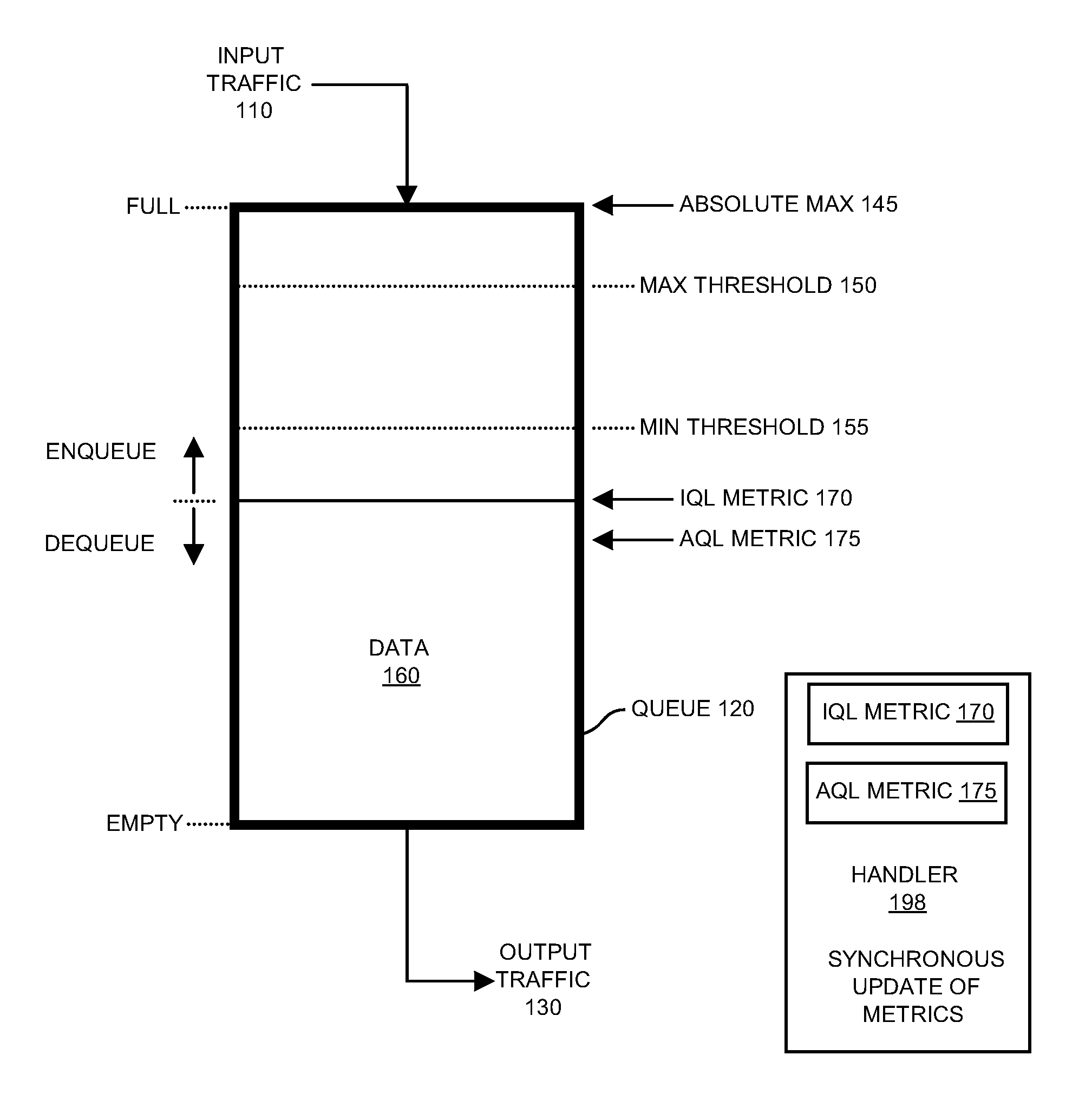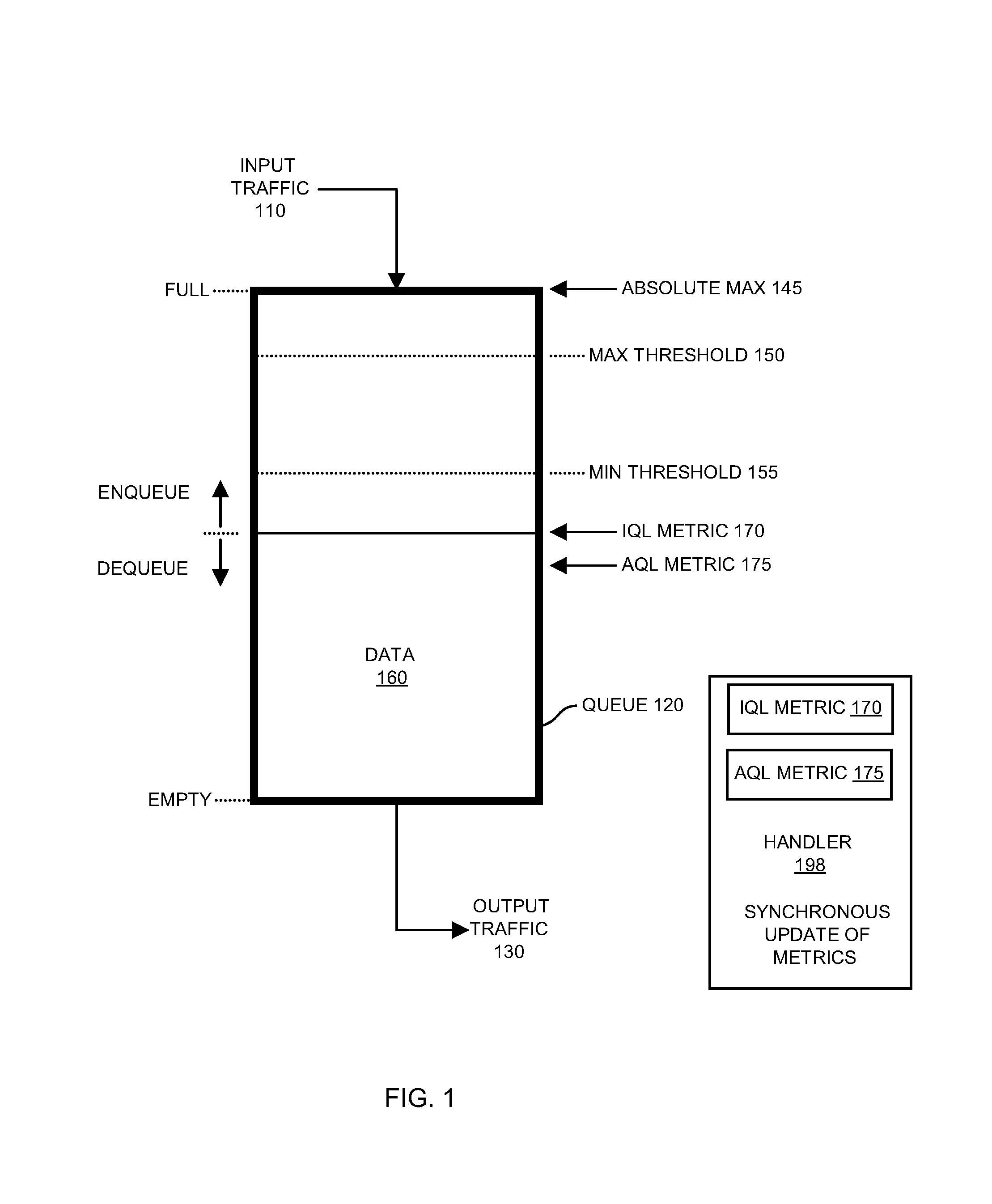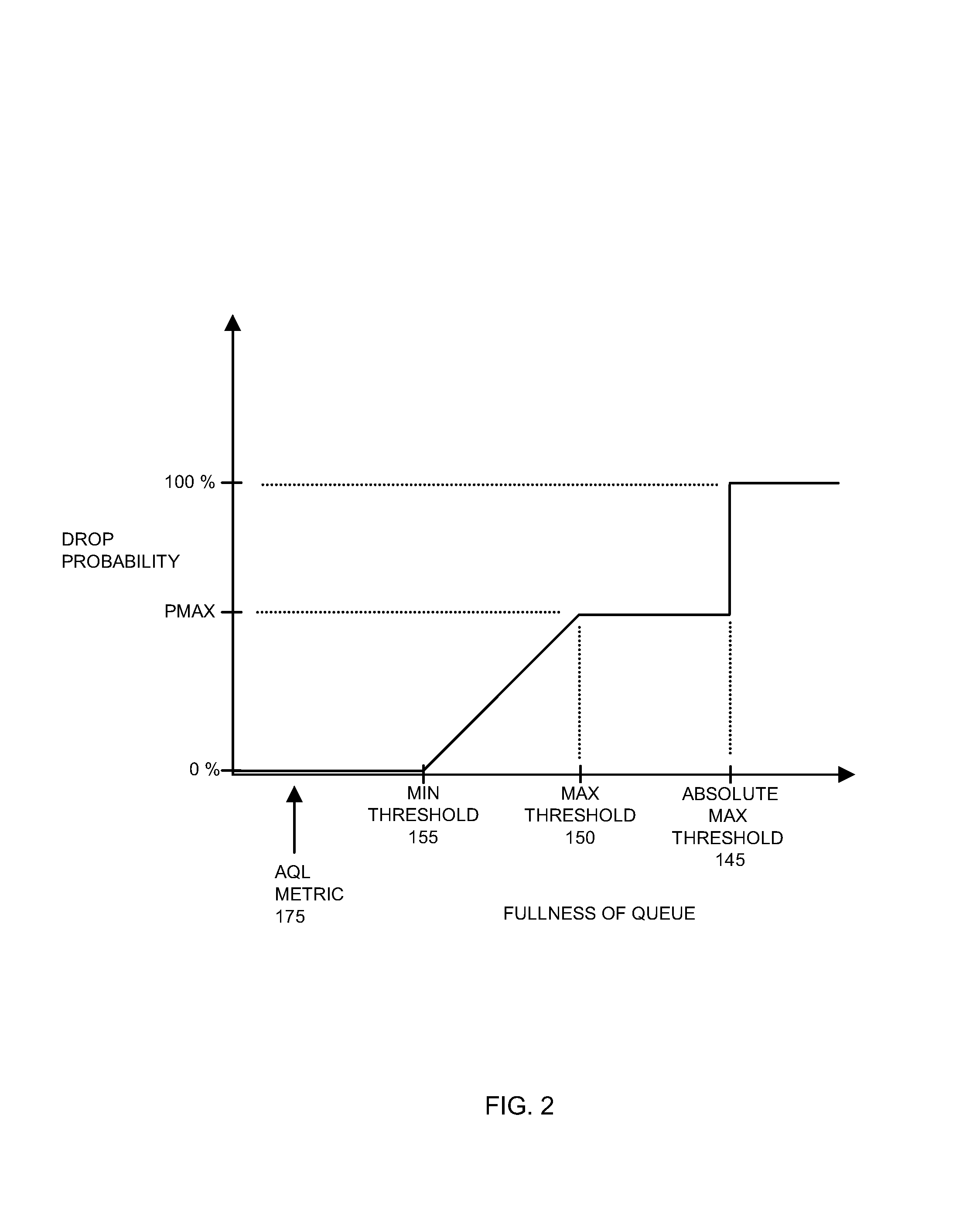Methods and apparatus for maintaining a queue
a technology of queues and methods, applied in the field of methods and apparatus for maintaining queues, can solve the problems of excessive overhead, large network congestion, and loss of data, and achieve the effects of high throughput, economic and efficient, and high performan
- Summary
- Abstract
- Description
- Claims
- Application Information
AI Technical Summary
Benefits of technology
Problems solved by technology
Method used
Image
Examples
Embodiment Construction
[0029]Networking devices such as routers sometimes implement thousands of data queues to temporarily store data packets for later transmission to an intended target. As a result of ever-increasing demand for bandwidth (e.g., Internet access) and simultaneous sharing of routers, such queues can be inundated with an inflow of data packets. It has been learned that without proper regulation of managing the inflow of data into the queue, both queue efficiency and overall network efficiency can suffer tremendously.
[0030]One aspect of the present invention is maintenance of a storage device such as a data queue. Because the capacity of a queue is typically limited, metrics such as queue length information (indicating relative fullness of the queue) are tracked in order to more efficiently regulate an inflow of new data stored in a queue. Although the techniques described herein can be used in networking applications, and particularly to enqueueing and dequeueing of data, the techniques ar...
PUM
 Login to View More
Login to View More Abstract
Description
Claims
Application Information
 Login to View More
Login to View More - R&D
- Intellectual Property
- Life Sciences
- Materials
- Tech Scout
- Unparalleled Data Quality
- Higher Quality Content
- 60% Fewer Hallucinations
Browse by: Latest US Patents, China's latest patents, Technical Efficacy Thesaurus, Application Domain, Technology Topic, Popular Technical Reports.
© 2025 PatSnap. All rights reserved.Legal|Privacy policy|Modern Slavery Act Transparency Statement|Sitemap|About US| Contact US: help@patsnap.com



